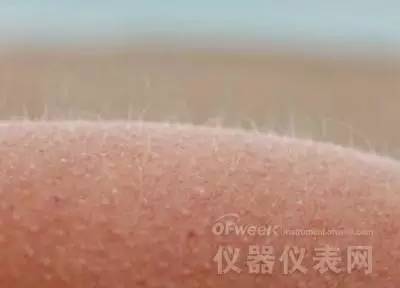Release date: 2016-12-07 According to foreign media reports, maybe one day the robot can feel the breeze, do you believe it? In fact, for us humans, skin is not only a barrier to protect us from dust and bacteria, but also a sensor that senses changes in the external environment. Through the feeling of the skin, we can not only feel the lightness of the breeze, but also the pain of external force. We can feel the change of cold and heat, dry and wet or smooth and rough. As researchers develop robotics further, they are also looking for ways to create features like real skin. He Xiaodong, a professor of materials science at Harbin Institute of Technology in China, and his colleagues have innovated in this area. The new technology they developed can mimic the fine hair on the surface of the human body. It is through these hairs that humans transmit sensory information to the skin nerves. Related research is published in the new internationally renowned journal ACS Applied Materials & Interfaces. The researchers used 30 micron thin wires instead of hair. They embedded a row of tiny wires in the silicone rubber. The purpose of this row of wires was to bring outside information to the artificial skin. Of course, this kind of wire does not feel pressure or movement changes like real hair. It uses displacement to make judgments about changes in the external environment. The wire itself has a small amount of charge that creates a small magnetic field. When one or more wires are moved, the surrounding magnetic field changes accordingly. The researchers found that the device was so sensitive that it could even detect a fly. It can also detect that an object has been swept across the surface and can even feel a slight wind. Researchers point out that the key to innovation is the choice of wire material. Researchers have previously used carbon nanotubes to make artificial hair, but the results are not ideal. The research team used a glass covered wire made of a conductive cobalt alloy. The wire of this material has a high toughness and can be knotted at will and does not break. The research team believes that the durability and economics of this material is sufficient to make it available in the real world. The results of this research can be used to sense prosthetics or corresponding health care equipment. In an email, the researchers said they tried to connect the sensor to the robotic arm, mimicking human fingers. This is important for bionic robots to help them determine when to grab or pick up something. In addition, researchers say they are working to reduce the size of the entire sensor device, which is currently 2 inches long. Source: Ofweek if you only have hearing loss in one ear, then you have unilateral hearing loss and you`re more likely to get all the support you need from a single hearing aid. You can wear a single unilateral hearing aid in your bad ear and hear normally with the other one. Because your other ear is functioning normally you will get all the benefits of binaural hearing with just one hearing device. Single Hearing Aid,Single Ear Hearing Aid,Single Sided Hearing Aids,One Sided Hearing Aid Shenzhen Sunshine Technology Co.,Ltd , https://www.yatwinsz.com